- wikiskripta.eu
- sciencedirect.com - CLINICAL SIGNS OF DEHYDRATION IN CHILDREN
- aafp.org - Diagnosis and Management of Dehydration in Children
- rch.org.au - Dehydration
Why is dehydration in children dangerous? What are the symptoms?
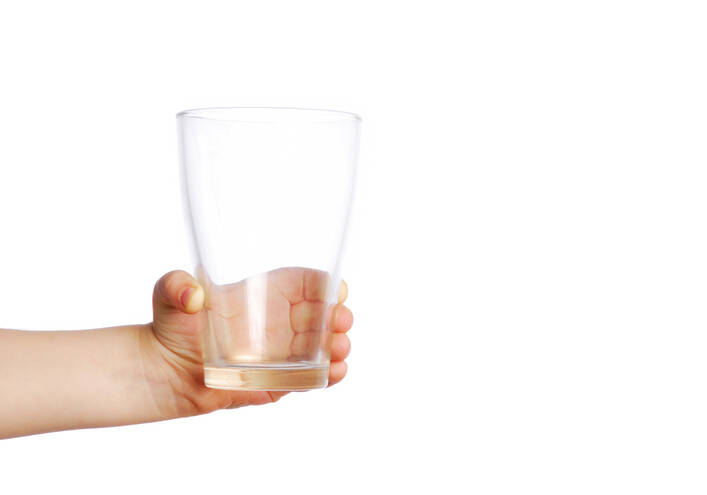
Dehydration is becoming a hot topic again, especially during the hot days of summer. Of course, various illnesses can cause it, for example, with diarrhoea or fever. It complicates life for adults, but much more so for children. It develops more quickly in them, and just as suddenly, it also complicates.
Article content
You ask:
Why is dehydration dangerous in children?
What are the most common causes? Is it only due to diarrhoea?
How does dehydration in children manifest itself?
What to do about dehydration?
Water is the basis for the origin and maintenance of life. Diet is important, but without water our bodies decline much more rapidly. It is reported that water makes up approximately 75% of our bodies. The rest is attributed to solids.
In an adult or elderly person, the percentage of water is 55-60%. In children, the percentage of water content is higher. It is approximately 75-80% in newborns. This figure also shows that our children are more sensitive to water management than adults.
Dehydration means that there is a deficiency of water in the body. This is caused by a reduced intake or, on the contrary, an excess loss of fluid from the body.
For more information on dehydration, see the magazine article that lists the symptoms of dehydration, and also the article on the symptom itself.
Dehydration in children and its most common causes
The causes of dehydration in children are the same as in adulthood. But childhood age has some peculiarities. Rotavirus infections are common in the youngest children, which cause diarrhea and thus the risk of dehydration.
In addition to rotavirus infections, diarrhoea is also encountered in salmonellosis, malabsorption syndrome, lactose intolerance or celiac disease. Irritable bowel syndrome can also be a cause of diarrhoea in children, as well as stress and psychological stress.
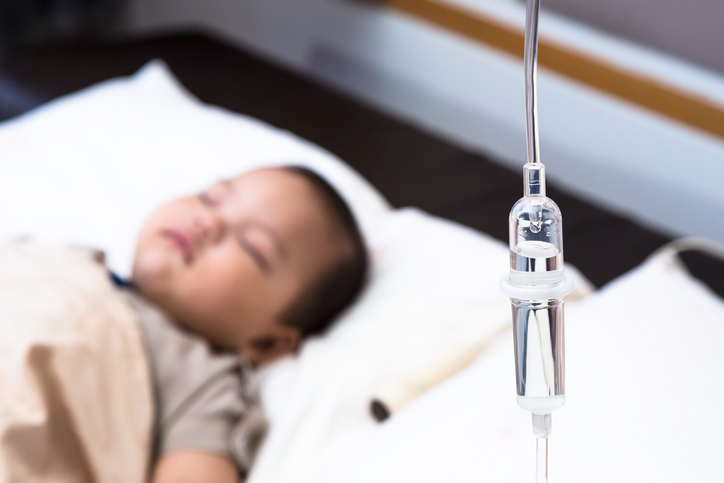
Other examples of fluid loss are vomiting, increased body temperature or fever. Not only various disease causes can cause a lack of fluid in the body. This also occurs as a consequence of insufficient water intake.
Children forget to drink fluids during the hot summer months, especially during play and sports. In this case, it is the parent's irreplaceable task to supervise the correct drinking regime, as well as the correct habit of regular drinking.
How much water does a child need to avoid dehydration?
For each period of childhood, there are, of course, different recommended values. A newborn and a breastfed child receives fluids from breast or artificial milk. For older infants, other fluid is already ranked. The best is pure, infant water, but also teas designed for the appropriate age.
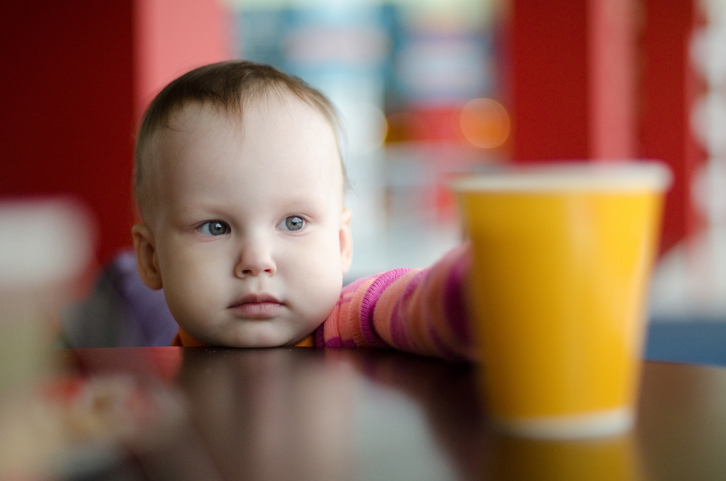
For older babies, plain water, milk, fruit juices should predominate. If you choose juices, fresh 100% juices are best. These can be diluted 1:1 with plain water. In the representation of minerals, low-mineralised waters can be used.
Unsuitable are sweetened bottled waters, over-saturated mineral waters, black tea, energy drinks and of course coffee and alcohol. Sugary waters and energy drinks also mean excess intake of unnecessary energy. This can be stored as fat and can cause childhood overweight or obesity. This carries other serious health risks.
Tip: For more information, see the magazine article Obesity in children and young people, what to do about it?
So much for appropriate and inappropriate beverages. The following table shows the recommended fluid intake values for different periods of childhood.
The table shows the recommended values for daily fluid intake for children at different ages
| Age | Amount of fluid in millilitres per kilogram per 24 hours |
Amount of fluids per 24 hours in millilitres |
| 3 days | 80-100 | 250-300 |
| 2 weeks | 125-150 | 400-500 |
| 3 months | 140-150 | 750-850 |
| 6 months | 130-145 | 950-1100 |
| 9 months | 130 | 1000-1250 |
| 1 year | 120-132 | 1100-1300 |
| 2 years | 100-125 | 1350-1500 |
| 4 years | 90-110 | 1600 |
| 10 years | 70-85 | 2000-2500 |
| 12 years | 70-100 | 2100-2500 |
| 18 years | 40-60 | 2200-2700 |
How is dehydration assessed in children?
In children, the assessment of dehydration is more complicated than in adults. Dehydration also has three grades. Weight (percent weight loss), the child's general appearance and speech, age, pulse, respiration, skin tension (turgor), eyes, general appearance of mucous membranes, and urine are assessed.
Clinically, dehydration is assessed according to the table
| Symptom | Mild dehydration | Moderate dehydration | Severe dehydration |
| Weight loss in % | 3-5 | 3-9 | 10% or more |
| Infant manifestations (up to 1 year) | lively, restless | restless, irritable, lethargic | Sleepy, flaccid muscles, cold extremities, blue or cyanotic fingertips, disturbed consciousness |
| Child's manifestations over 1 year | thirsty, lively, restless | thirsty, lively, restless | cold and cyanotic fingertips, even convulsions |
| Pulse | normal | weak, rapid. | threadlike, accelerated |
| Systolic pressure | normal | may be low | low to unmeasurable |
| Breathing | normal | deepened, accelerated | deepened, accelerated |
| Large fontanelle | normal | recessed | markedly, deeply sunken |
| Skin tension turgor | good | reduced | When the skin eyelashes are formed, they stand |
| Eyes | normal with tears | sunken, tears may be in small amounts | sunken, dry, tears absent |
| Mucous membranes | moist | dry, dry lips | very dry, cracked lips, tongue |
| Urination | normal | reduced urination, darker urine, urine smells | little urine, urination may disappear |
| Capillary return | normal within 2 seconds | within 3 seconds | over 3 seconds |
| Fluid deficit | 30-50 ml/kg | 60-90 ml/kg | 100 ml/kg or more |
Warning signs of dehydration in a nutshell
Refer to the table to get an idea of the severity of the symptoms. If you suspect dehydration based on the symptoms listed, it is necessary to replenish fluids. In the case of moderate to severe dehydration, immediate professional help should be sought.
Professional help should also be sought if you cannot replenish fluids at home, if the child refuses fluids or if vomiting or persistent diarrhoea persists.
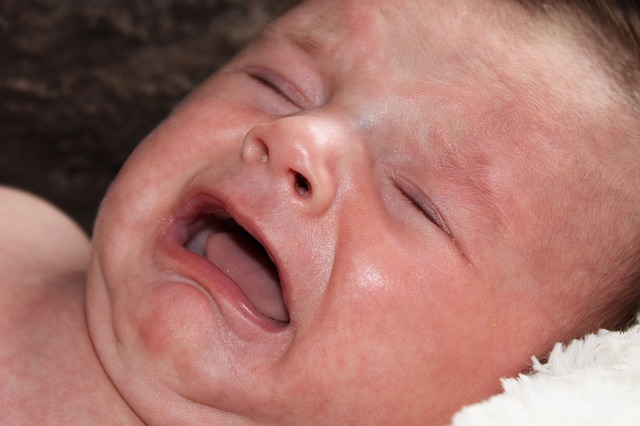
Warning signs to seek professional help include:
- Dry skin, lips, tongue, decreased saliva production
- crying without tears
- the child is irritable or tired, sleepy (out of mode), laying his/her head
- sad mood, uninterested in play
- disorientation is associated
- dark, yellow-orange smelling urine
- cessation of urine production if children do not urinate for 3-4 hours by six months
- in older children for more than 6-8 hours
- in infants, a sunken fontanelle
- sunken eyes
- flaccid muscles, limbs
- distended but also painful abdomen
- feeling like vomiting
- weight loss
- dizziness
- collapse
- impaired consciousness, unconsciousness
- deepened, rapid and irregular breathing
- rapid pulse
Let's look at all the summer problems together:
Our health in summer - sun, heat, injuries and illness
The dangers of dehydration in children
The risk of dehydration is higher in children, not least because the metabolism of the child's body is faster. Its compensatory mechanisms and reserves are smaller than those of an adult.
In children, dehydration develops quickly, and within a few hours!
Complications of severe dehydration include acute renal failure (acute renal insufficiency). The child's body is exhausted by accelerated cardiac work. Irregular breathing is a threat. Body convulsions, disturbances of consciousness and even unconsciousness (coma) are dangerous. Hypovolemic shock develops. If the problem persists, death is a threat.
Treatment of dehydration in children
As in the treatment of dehydration in adults, it is most important to replenish the missing fluids. With mild dehydration, mineral unsweetened water or tea sweetened with grape sugar can be used.
Fluids are given by the spoonful, cold, and one teaspoon every 10-15 minutes. If the child tolerates this, it is continued at a higher frequency, every 5-10 minutes, up to 120 milliliters per hour.
If the child is vomiting or has diarrhoea, it is important that fluids are given in the above manner. Treatment for this condition is also needed to avoid complications. Administration of a rehydration solution is appropriate.
A rehydration solution will replenish lost fluids and also minerals that are lost with water during diarrhoea and vomiting. Solutions are available that can be applied from the 1st week of life.
In older children, fluids are given by the tablespoon and at regular intervals. Water, mineral water, rehydration solution should be alternated. Diluted fresh fruit or vegetable juices are also suitable.
In addition to fluid replenishment, a resting regime, a light diet and monitoring of health status are important. If the symptoms of dehydration worsen and treatment of the underlying cause does not help, a specialist examination is needed. This is to prevent the development of a more severe form of dehydration.
The smaller the child, the more difficult it is to manage dehydration in the home environment.
Prevention of dehydration in children is most important
Prevention should be the first priority. Parents should be informed what to do if the child's health deteriorates. This is especially the case with diarrhoea, vomiting and fever. Of course, it is important to think about replacing lost fluids and drinking adequately.
During hot summer days, and especially during increased physical activity, it is important to replenish fluids regularly. Also during windy days and even during cold, dry weather. This is when fluid loss occurs at an increased rate.
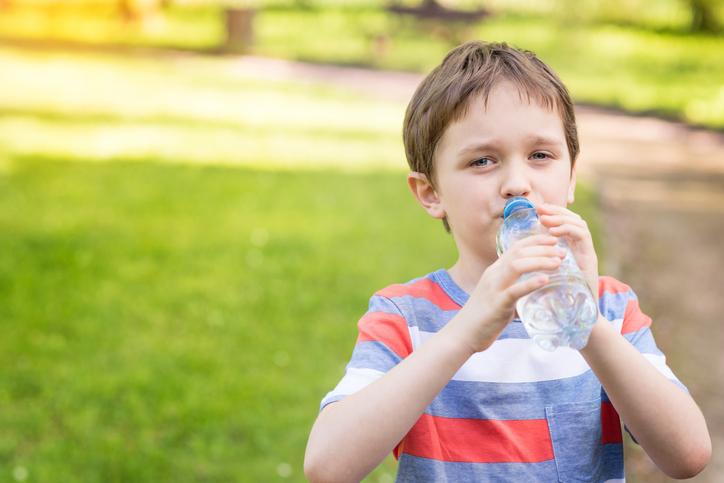
Parents need to encourage children to drink regularly and to motivate them positively when they refuse to drink. A suitable way is to use coloured glasses with pictures and to join in drinking with them.
Children enjoy clinking their glasses, although some might argue that this fosters an addiction to alcohol. Alternatively, it is a good idea to find other appropriate but playful ways to encourage the child to drink fluids.
Table water, low mineralised water, fresh fruit and vegetable juices, fruit teas are suitable. On the other hand, sweetened drinks, highly carbonated bottled water, energy drinks, black tea or coffee and alcohol are not suitable for children.
Even diet can help to replace lost fluids. For example, choosing the right fruit and vegetables can help. These include cucumber, tomato, lettuce, apple, nectarine and others. The biggest source of water from vegetables is, of course, watermelon.
Summary
When to increase fluid intake:
- When fever is present
- increased fluid loss due to diarrhoea, vomiting, increased urination
- burns and scalds
- blood loss
- increased sweating, hot weather
- during dry weather
- increased physical exertion
And what to supplement with:
- pure water
- for young children, infant formula
- mineral water
- rehydration solution
- tea
- fresh fruit juices
- milk
- light diet
- fruit, vegetables
Symptoms:
- Thirst
- dry skin, mucous membranes
- reduced skin elasticity (turgor)
- reduced urine output
- headache
- weight loss of more than 3% of body weight
- fatigue
- loss of interest in the game
- sleepiness
- rapid pulse
- cold and blue acral, i.e. terminal parts of the body
- confusion
- collapse
- cessation of urination
- disturbances of consciousness, unconsciousness
- respiratory disturbances
Inappropriate are:
- sweetened beverages
- energy drinks
- carbonated bottled water
- coffee
- black tea
- alcohol
Video about dehydration
Interesting resources










